Cruise Day 62
Speed 17 knots (kts)
Course 180° (S)
Location Bering Strait, ~8nm W. of Cape Prince of Wales, Alaska
Depth 53 m
GO DEEPER DISCUSSION: (see previous journal for the questions.)
During the last ice age sea level was over 100 meters shallower than it is today. This is because excess water from precipitation was stored in glacial ice across much of northern North America and Eurasia instead of running off back into the oceans. So all of the water we’ve been in for the last few days would have been high and dry coastal plains. This connected Alaska to Siberia across the so-called Bering Land Bridge.
TODAY’S JOURNAL:
Yesterday evening the decision was made to cancel the remaining science stations on our expedition due to high winds and seas, along with the lack of any remaining time to wait out the weather. So we’ve switched to finish up, clean up, and pack up mode aboard the Healy today. A little after lunch, there was an all-ship announcement from King Neptune that we were exiting the realm of the polar bear, crossing the Arctic Circle back south into the Bering Strait. We’ve just gone through into the Bering Sea, with land in sight for the first time on the expedition since we were here on 15 August. Once again Russia and the United States were both in view with the Big & Little Diomede Islands together on the starboard side and Alaska’s Cape Prince of Wales marking the western tip of the Seward Peninsula. While many of us were enjoying the sight of land after almost two months with only ocean and ice views we had a pair of orcas put in an appearance, another major highlight of the day and indeed the whole cruise.
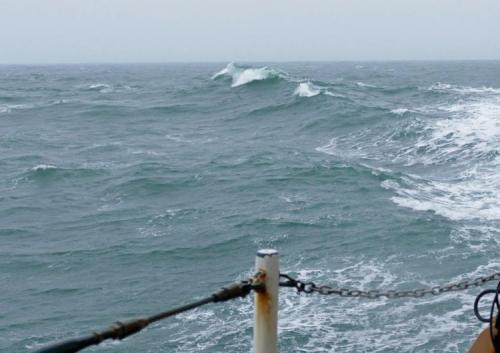 High rolling swells in the Chukchi and Bering Seas put an end to the 2015 US Arctic GEOTRACES sampling operations.
High rolling swells in the Chukchi and Bering Seas put an end to the 2015 US Arctic GEOTRACES sampling operations.
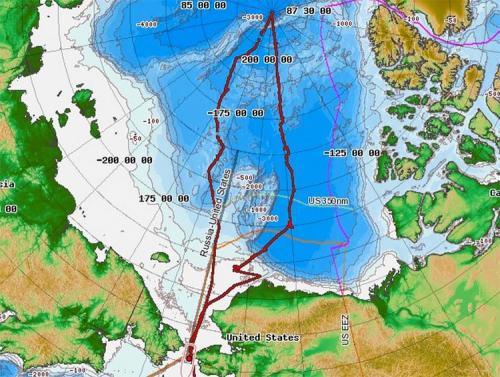 Our cruise track through the Arctic Ocean shows our travels since we crossed north through the Bering Strait on 15 August 2015.
Our cruise track through the Arctic Ocean shows our travels since we crossed north through the Bering Strait on 15 August 2015.
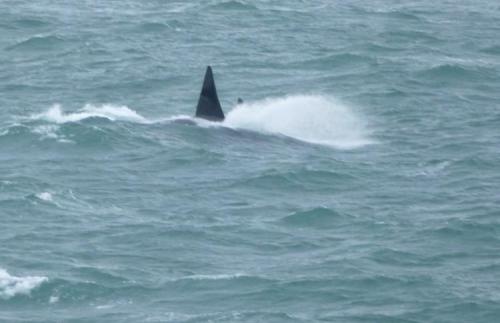 Two orca fins (the second just visible behind the first) break the ocean’s surface in the Bering Strait. The front whale is a male, which have tall upright dorsal fins.
Two orca fins (the second just visible behind the first) break the ocean’s surface in the Bering Strait. The front whale is a male, which have tall upright dorsal fins.
Some of the science teams had samples to wrap up analyzing today, while others started the process of getting their labs squared away. It is almost like getting ready to move, with cleaning, packing, and planning for where to safely stow gear and samples that are going home along with how to arrange the shipment of these materials when Healy returns to port in Seattle. End-of-cruise reports are in the works and final plans are coming together for the morale meal that the science team is cooking for tomorrow evening’s dinner!
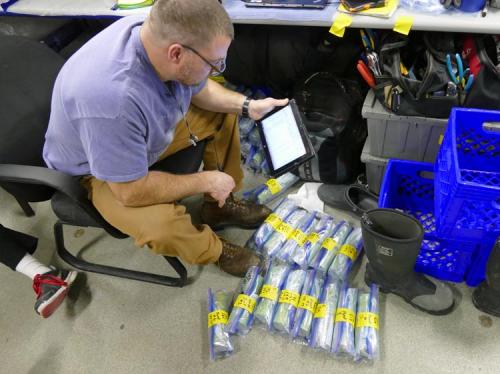 Tim Kenna inventories his cesium samples before packing them up for analysis back at his home lab, the Lamont-Doherty Earth Observatory at Columbia University.
Tim Kenna inventories his cesium samples before packing them up for analysis back at his home lab, the Lamont-Doherty Earth Observatory at Columbia University.
 Jessica Fitzsimmons filters a water sample. The bubble where many scientists including Jessica have worked for the whole cruise is going to be torn down once lab work is wrapped up.
Jessica Fitzsimmons filters a water sample. The bubble where many scientists including Jessica have worked for the whole cruise is going to be torn down once lab work is wrapped up.
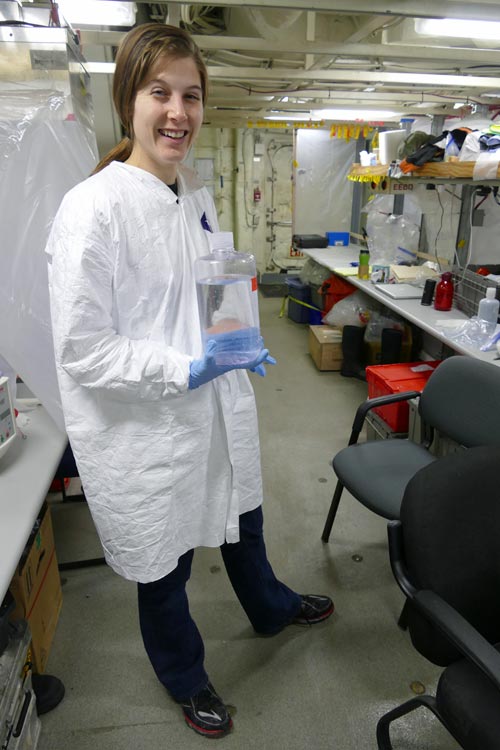 Alison Agather in lab cleaning mode.
Alison Agather in lab cleaning mode.
 Paul Aguilar took part of the day to organize a cargo container on the Healy’s bow.
Paul Aguilar took part of the day to organize a cargo container on the Healy’s bow.
 Kyle McQuiggan began taking apart the instrument package on the GEOTRACES sampling rosette today.
Kyle McQuiggan began taking apart the instrument package on the GEOTRACES sampling rosette today.
GO DEEPER!
What kind of whales are orcas (also known as killer whales) most closely related to?
Aloft Con web cam updated every hour
Healy Track
That's all for now. Best- Bill


Comments